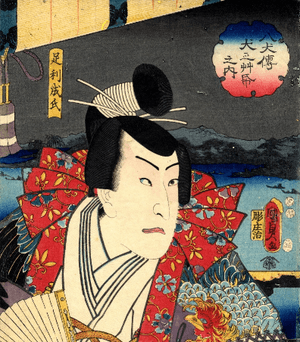Kyōtoku facts for kids
Kyōtoku (享徳) was a special name for a period of time in Japan. Think of it like how we have years, but in old Japan, they also used era names. This era started in July 1452 and ended in July 1455. During these years, the emperor of Japan was Go-Hanazono.
Important Events During the Kyōtoku Era
One very important event happened in 1454, which was the third year of the Kyōtoku era (Kyōtoku 3). A powerful leader named Ashikaga Shigeuji ordered the killing of another important figure, Uesugi Noritada. This event was a big deal and is remembered as the Kyōtoku no Ran, which means "Kyōtoku Rebellion" or "Kyōtoku Disturbance." It caused a lot of trouble and fighting in the region.
Understanding Japanese Eras
Japanese era names, also called nengō, are a way to mark periods of time. Each emperor's reign usually had one or more era names. The Kyōtoku era came after an era called Hōtoku and was followed by the Kōshō era. These eras help historians keep track of events and changes in Japanese history.
Related Topics


